Industry
Top 5 KPIs: Murray King
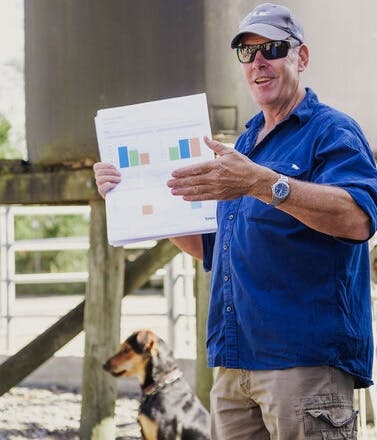
"We’re really lucky today with the technology that we can implement on farm. 20 years ago you just wouldn’t be able to be an absentee owner with a farm 3-4 hours away and stay across it to the extent we can. We have so many fantastic tools for remote working and staying connected to the business - be it milk quality data, managing our pivots, keeping across farm reporting, or staying in touch with our people."
- Murray King, Kingsway Farms
Murray King, former Chairman LIC, Appleby Farms Director and Kingsway Farms owner, shares his Top 5 farming standards. Murray says he checks in with his team at certain points during the year to see how they’re tracking against their farm standards. He says, “I try really hard not to micromanage - it’s bloody hard because I’m an enquiring person and I want to know what’s happening on the farm - but we’re really lucky to have a fantastic team who we’ve been fortunate to have with us over the past few seasons. The stability that has come from this has been just gold - everybody knows what to do and things just run as they should.”
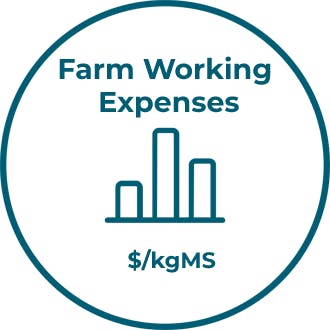
Farm Working Expenses
Because we farm across Canterbury and Nelson we expect our production to be relatively steady so to increase profitability we focus on costs - particularly farm working costs per kilogram of milk solids, and keeping that as stable as we can.
It’s important to have an idea of how you’re tracking throughout the season and to keep a regular check on costs as they can run away on you if you’re not careful. By understanding your farm working costs it becomes really easy to understand your break even milk price and debt servicing costs per kgMS.
My advice is to focus on the big ticket items like your fert and feed and think about how you might manage around them, as adjustments here will make a bigger difference to your bottom line than items like weed and pest control. For instance, last season it looked like the price of fertiliser was going to rise so we chose to top up on P before prices rose so that we had a good buffer on farm. In saying this, we were still not exempt from rising farm costs, with our working costs increasing as a result of inflation and reduced production so there is always work to be done!

Pasture eaten
Matching feed supply and demand is one of the key principles of pasture-based dairy farming and can be one of the most profitable parts of your business if you get it right. We consider ourselves to be System 3 farmers, using supplementary feed like fodder beet in the shoulders of the season to extend lactation.
We have a blend of Contract & Sharemilkers and we talk to our teams about making sure they employ the right people. We look for more mature staff and recruit for people who are skilled and competent. Across our farms it’s important for us to recruit people who are good pasture managers to ensure that we get our pasture curve right - admittedly under irrigation this is a lot easier to do.
Check out the DairyNZ Calculators here: Pasture & Crop Eaten & Pasture Potential Tool
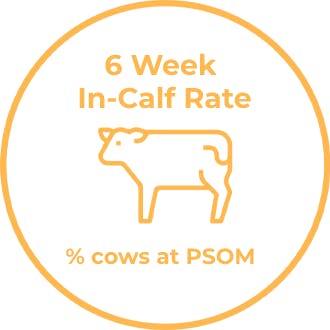
6 week in-calf rate
One of our key standards is to be a ‘wasteless business’. There’s a few inputs we include under this banner (and certainly not limited to): nitrates, water, feed, animal wastage, people, and of course general farm waste. All are incredibly important to the farm system however for the purpose of this exercise I’m going to pick on 6 week in-calf rate and death rate as an example. If our 6 week in-calf rate isn’t right then we’re bound to have wastage in our system - be that through late calving or empty cows. Getting this right helps with the pasture curve and gives us options and choices around replacements and earlies. We track our youngstock liveweights alongside this, using MINDA to benchmark our weights.
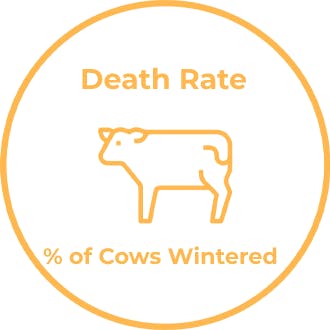
Death Rate
In terms of percentage of deaths relative to cows wintered, we target 2-3% - the lower the better. We do this through managing animal health, very carefully. So for us this means proactive management, good animal husbandry, and ensuring our people have a very good understanding of what a sick cow looks like. To use Johne's Disease as an example - we’ve taken an aggressive approach to managing this where we do whole herd testing in Jan/Feb using milk samples from herd tests to detect the antibody that shows an animal has been exposed to the disease. Via herd testing any subclinical cows are culled as they turn up positive - this has made a huge difference for us.
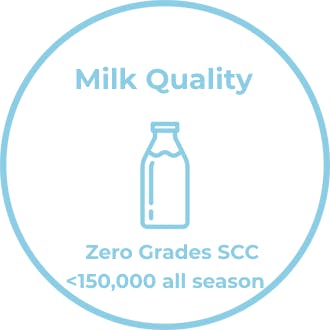
Milk quality
This is a particularly important non-negotiable for us, particularly on the ice-cream farm in Nelson. Appleby Farms has a story to tell to sell our product and milk quality is incredibly important to that. There is so much work that goes into auditing and food safety on the food production side of things so it’s really important and beneficial to the processor to have high quality raw product to start from.
In terms of supply, from the Co-op perspective a high SCC grade will cost you so there is certainly that milk cheque factor as well. More importantly though, by monitoring SCC we can keep an eye on the detail. SCC grades and fluctuations can be a good indicator of other things that might be happening on farm. Generally speaking, when there’s a spike it means something has been missed so targeting low SCC grades ensures that our whole farming operation is proactive and we’re all across the detail.
Interested to see what others have ranked as their Top 5 KPIs?
Take a look at what other industry characters have defined as their Top 5 Farming Key Performance Indicators.
Listen on your favourite podcast platform
More articles
The Tune Up
The age of authenticity
Julia Jones & Murray King. Consumers are demanding more transparency in food so how do we prove our on farm story and add value to our products to unlock premiums?
Industry
Top 5 KPIs: Julia Jones
Julia Jones, Head of Insight at NZX, shares her favourite KPIs when thinking about farming through the lens of the consumer.
Industry
Data as a strategic asset: investing in farm data
Just like any other asset, data only becomes valuable when captured, stored, maintained and protected in an appropriate way. It also needs to be validated and accessible.